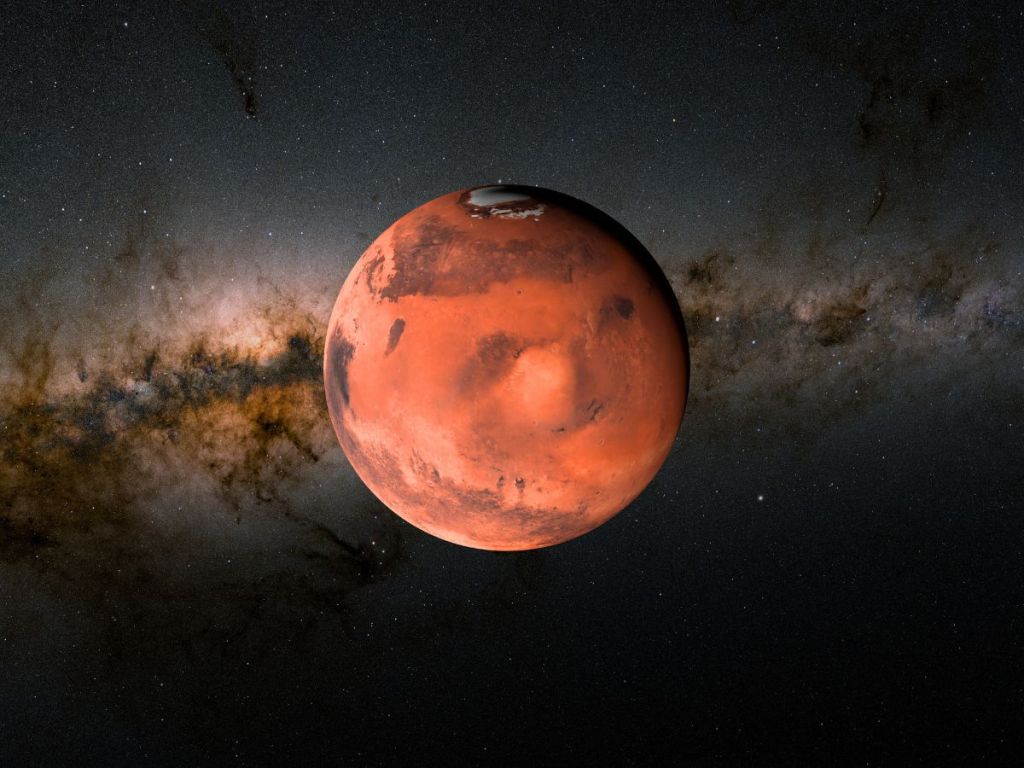It’s a question that’s fascinated scientists and space enthusiasts for decades. Are humans able to live on Mars? Will mankind be able to survive? If yes, what would it look like?
Hollywood films like The Martian and Ad Astra have imagined the struggles and triumphs of living on a planet that’s yet to be fully explored by telescopes and rovers. So, it isn’t exactly rocket science to know that inhabiting Mars comes with a unique set of challenges. Let’s talk about them.
What is the length of a day, month and year on Mars?
First, if you were to be a citizen of Mars, how would you plan out your day? Unsurprisingly, how time passes on Mars is markedly different to how it passes on Earth.
The time it takes for Earth to rotate on its axis is 24 hours — that means one day for us Earthlings. For Mars to rotate on its axis takes 24 hours, 37 minutes, and 22 seconds — one day in Martian time. It might not seem like a massive difference, but multiply that by days, hours and months … it’s going to be a headache.
Gravity on Mars is also 38% of that on Earth, which means we’d likely be levitating most of the time if we were to inhabit Mars. Being able to float may be fun for a while, but not so much in the long term: how are we supposed to sleep?!
Could we live on Mars? Here are the challenges
Although Christopher Nolan’s Interstellar doesn’t depict Mars, the film’s premise is about characters Murph, Cooper, Brand and Mann exploring an alternate planet with suitable living conditions for mankind.
NASA and other space agencies around the globe have been doing the same with space programs focused on Mars. For example, the US and China want to send humans to Mars by 2030, and the former is actively developing “life support systems” to make the gargantuan feat possible.
Here are just a few of the elements that need to be taken into consideration if we want to live on Mars.
Atmosphere
When it comes to breathing on Mars, Hollywood films have taught us well: we can’t. Not without assistance, anyway! We need special breathing equipment because the air on Mars is composed of carbon dioxide — the exact element our lungs breathe out. Yikes.
Extreme weather
According to Science magazine, the temperature on Mars is much colder than on Earth. During the day Mars averages up to 21 degrees Celsius. Not too bad, right? At night, temperatures can drop to as low as -128 degrees Celsius (lowest recorded temperature).
So the climate on the red, rocky planet is pretty extreme at the lower end. How many people would be capable of adapting? On top of this, keep in mind that Mars experiences “local, regional, or even global dust storms”, says NASA. We imagine that it’d be something like Arrakis in Dune.

Rocky surface
There’s a reason why rovers are used on Mars and not, say, mountain bikes. NASA has sent five remote-controlled land rovers to Mars since 1997 to collect land and water samples, and seek evidence of life. China’s space agency sent a rover, Zhurong, to Mars for similar purposes in 2021 but it went into an extended, planned “hibernation” from May 2022.
However, Chinese officials say Zhurong has likely experienced “excessive” sand and dust build-up, affecting its ability to properly generate power.
Ice caps
Brrr. It gets painfully cold on Mars at night. Ice caps are therefore not an uncommon sight on the planet. According to the European space agency, the north and south poles of Mars contain ice caps, and ice caps in the south “could be a mixture of water and carbon dioxide”. One part of the ice cap is a blend of “85% highly reflective carbon dioxide ice and 15% water ice”.
The presence of ice and water suggested there may have been signs of life.

Living on Mars
Relocating to Mars is an ambitious dream and an Adamic task that will take decades, if not generations, to realise.
Keep in mind that Mars (228 million kilometres) is much further from the Sun than Earth (a mere 151 million kilometres). The distance between Mars and Earth varies but is, on average, around 225 million kilometres. By comparison, the average distance between Earth and the Moon is a paltry 384,000 kilometres.
Transporting food, water, liquid, medical equipment and other important tools for research is, therefore, a logistical nightmare. NASA states that astronauts leaving Earth en route to Mars would take roughly three years to reach the red planet. It’s an incredibly long and lonely journey.
So, is it even possible at this point for us to live on Mars? Being able to find possible signs of life is one thing, but to carry out a mass exodus and build a civilisation from scratch on a planet with extreme conditions is another. Perhaps in 50 years we’ll have a clearer picture, but for now we need to keep exploring Mars so that we can learn more about the planet.
Image: Nemes Laszlo via Getty Images





